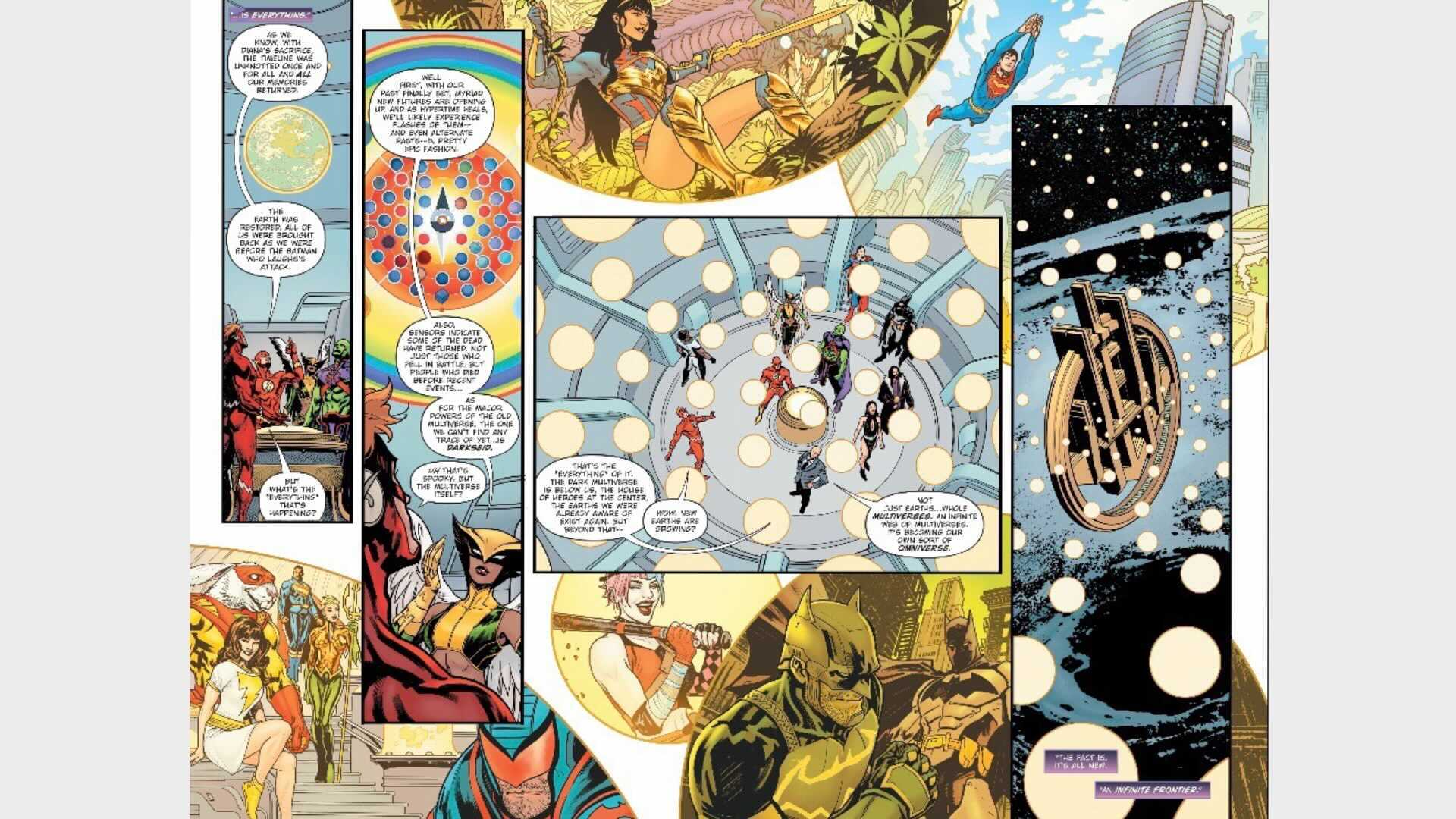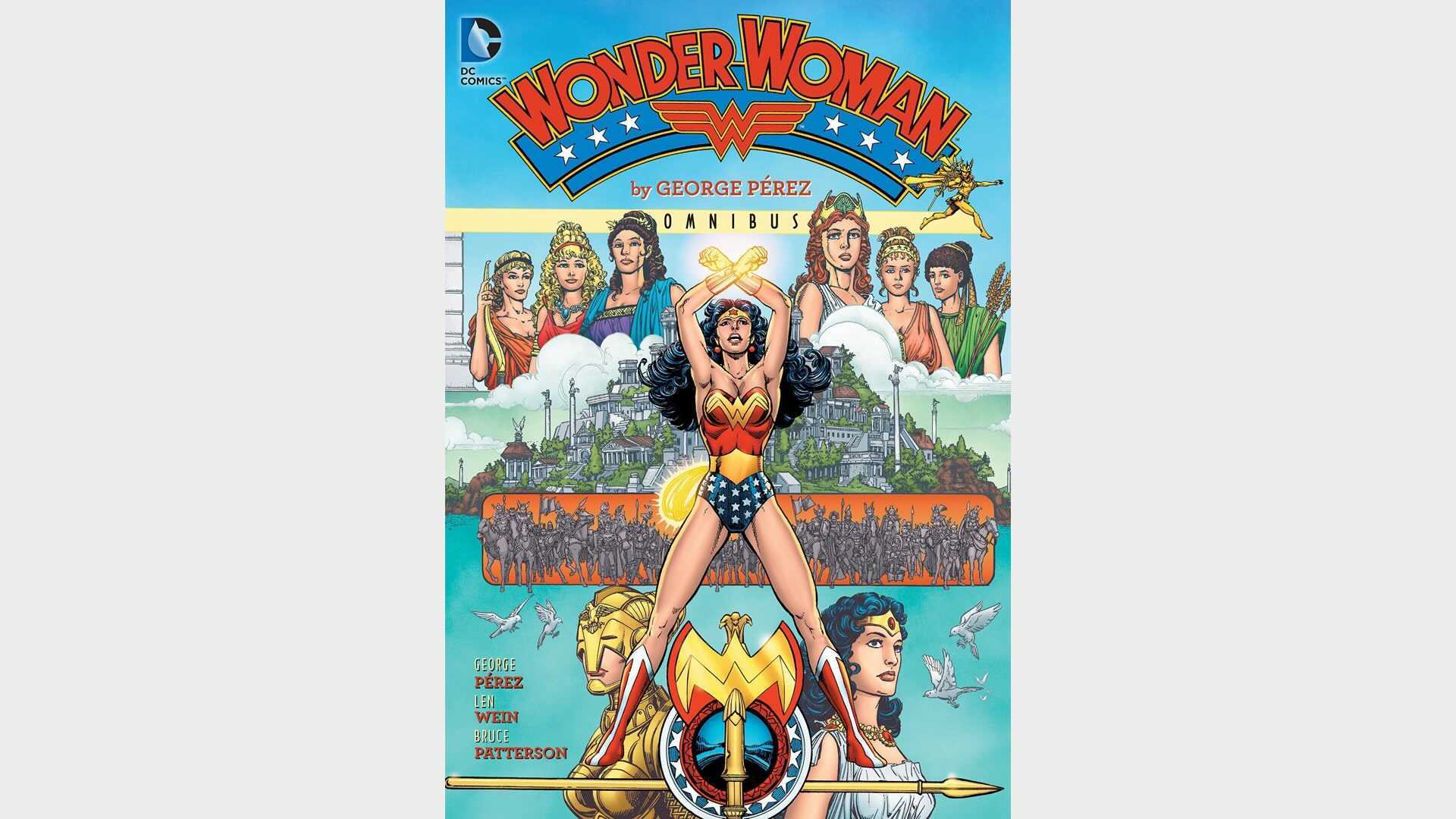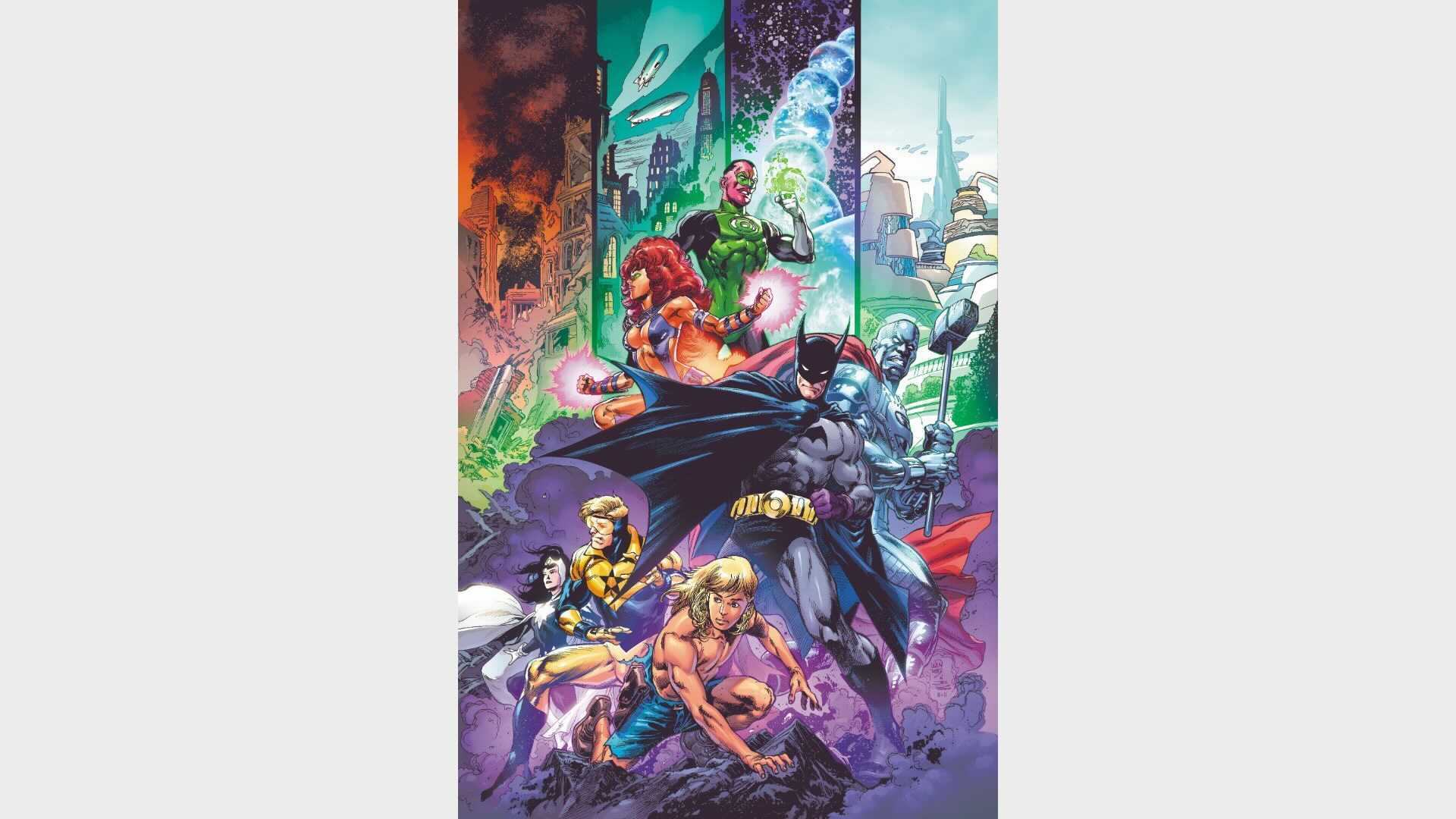DC spent 35 years trying to fix continuity, now it's your turn
DC comic book continuity has no rules … for now at least

"...everything was put back where it belonged...and we do mean everything. All the damage from all the Crises was undone…"
One more time with emphasis…
"All the damage from ALL the Crises was undone…"
Long-time DC readers might have missed that little nugget of perhaps vital information, slipped somewhat inconspicuously into a May 25 press announcement from the publisher about the fourth and fifth issues of the upcoming six-issue limited series Infinite Frontier, on sale in August.
Written by Joshua Williamson, Infinite Frontier springs from the game-changing events of January's Dark Nights: Death Metal #7 by writer Scott Synder and its brief exposition-heavy epilogue which was more or less reiterated in March's Infinite Frontier #0 framing story written by Williamson, Snyder, and James Tynion IV.
The 10-page Death Metal epilogue mainly defined the parameters of a new, bigger DC Universe. It also set the stage for the events of the Infinite Frontier series, some story developments in other regular titles, and likely a major DC event that pits the DCU against a powered-up Darkseid in the months to come. But in terms of its effect on continuity, the impact of Death Metal was relatively vague.
"The timeline was unknotted once and for all and all our memories returned," Barry Allen explains to Wally West (bolding DC's).
Get the best comic news, insights, opinions, analysis and more!
"...with our past finally set, myriad new futures are opening up. And as Hypertime heals, we'll likely experience flashes of them -- and even alternate pasts -- in pretty epic fashion," Hawkgirl adds.

It was somewhat up for interpretation what "our past finally set" and "all our memories" mean. While Snyder referred to Death Metal as an "anti-crisis," since 2016's Rebirth DC has mostly been specifically preoccupied with undoing - sometimes pointedly - the effects of the 2011 full 'New 52' reboot.
In DC terms - "set" and "all" have been relative to the pathway of various reboots and retcons that have come before.
But DC hadn't really said out loud it was undoing "all" Crises since and including 1986's Crisis on Infinite Earths, at least until that press release's seemingly throwaway line.
In past years that would have been cause for a close examination of what was still official continuity/canon and what was the new official DC timeline.
And DC would have done it itself - likely in the pages of a heavily-marketed event series.
But the publisher doesn't seem inclined to explain this time around. And as has been its M.O. in more recent years, it isn't answering questions about continuity either.
So when it comes to determining what the official DC timeline is, or simply if there even is one, we readers are likely on our own until further notice.
Individual readers may or may not embrace this editorial new era that emphasizes that all DC stories happened and it's more or less up to them to determine how - not even mentioning if the how even matters to them at all. But either way, it is a sea change from the publisher's previous every-five-years-or-so preoccupation with offering in-story explanations to try to make narrative sense of its now 80-year-old timeline.
[Newsarama ranks ALL of DC's Crises from best to worst.]
Did the Justice Society of America exist in the same timeline as Earth-Prime Superman or not?
Who was the founding female member of the Justice League - Wonder Woman or Black Canary?
Did Clark Kent ever have a career as Superboy in Smallville?
And if not, what does that mean for The Legion of Super-Heroes?
These are just some of the questions very familiar to hardcore DC readers whose answers have been (for lack of a better term) 'fluid' since 1986 when they needed to try to make logical sense of the various reboots DC has decided was necessary to update its core characters.

This story could be a laundry list of what DC seems to be calling the "damage" the Crises caused. John Byrne's Man of Steel, Frank Miller and David Mazzucchelli's Batman: Year One, George Pérez's Wonder Woman, and Tim Truman's Hawkworld come immediately to mind when thinking about the post-Crisis touchstones that long-term only wound up adding to the confusion the original Crisis endeavored to fix and resulted in the need for maintenance Crises and reboots since.
But trying to explain all the retcons that have been retconned and then retconned again would take too long and induce too many headaches to detail today.
Suffice to say in more recent years DC has increasingly relied on straight-up meta-commentary and explanation to put Humpty Dumpty back together again. Google "Superboy-Prime, punch" for more on that topic.
Death Metal essentially cemented the meta-premise DC is increasingly moving towards - that the superheroes of the DCU know their existence is part of the fabric of a story and gets edited and reinterpreted in the telling all the time.
This approach was somewhat pioneered and long-advocated by writer Grant Morrison, who started in this direction in their 1988-1995 Vertigo series Animal Man and later embraced in the much more mainstream two volumes of Batman, Incorporated.
Despite those latter series coming on the immediate heels of the 'New 52' reboot, Morrison more or less picked up on whatever past Batman continuity threads they wanted, prior rewritten timelines be damned.
(And btw, Morrison gives a thumbs up to the new approach DC seems to be taking).
But even if long-time readers previously concerned with continuity accept the new DC dogma that all DC stories have happened in the DC Omniverse, that the Clark Kent in Action Comics was and was not Superboy… that the answer to who co-founded the Justice League - Diana or Dinah is "yes" … that Superman both inspired the Justice Society to form and came to Earth years after the JSA's heyday - there's still a fair question of narrative structure.
Characterization is based on past experiences. Relationships are structured on history. Drama is based on stakes that can't be revoked. All of these are magnified that much more in serial fiction.
Stakes have always been marginalized at the 'Big Two' comic book publishers where death is merely a temporary inconvenience, but history and experience don't have clear definitions in the DCU anymore, where do characterization and conflict come from?
Is DC now simply relying on the micro over the macro-view? Is it basically indirectly telling its readers to pay attention to the now, and don't spend too much time or energy thinking about how it fits with the then and later?

Somewhat interestingly, while the publisher won't confirm and the individual players aren't talking, in early 2020 DC seemed on the path to doing what it's done in the past - offer an in-story device to explain a timeline in which Batman and Superman began their careers in the late '30s but they're both in their 30s today.
The recent two-issue series Generations: Shattered and Generations: Forged presented a DCU in which everyone just lived longer, therefore the Bruce Wayne/Batman who began his career in 1939 is still the same Bruce Wayne/Batman of 2021 and he experienced every story in-between.
It is an all-compassing way of explaining DC's (and to be fair Marvel's) biggest narrative dilemma - how to explain decades of stories in the real world in a fictional world in which time is more or less static.
Now even Generations unique spin requires some participation from the reader to make sense of ('Batman: Year One' again springs to mind), but there is evidence to suggest DC was headed in the direction of making a timeline like that canon and not just what's now an alternate Earth story that ironically and somewhat confusingly enough, is also officially in-continuity.
The sudden and surprising exit of DC co-publisher Dan DiDio in early 2020 on the eve of the launch of the then-larger Generations publishing initiative (Shattered and Forged were part of a briefer, reimagined version) and whether it was a key factor in his exit will always be a matter of speculation until someone addresses it publicly (which won't be DC).
Either which way, if you happen to be interested in reconciling how the Superman of 2021 fits together with the Superman of 1986's Man of Steel fits together with the Superboy of 1982's Legion of Super-Heroes storyline The Great Darkness Saga, for now at least you're gonna have to figure that out for yourself.
DC may have reached the point where it knows any answer it gives will just create three more questions.
But hey, we'll keep asking.
Regardless of where they fit in continuity, Newsarama ranks the best DC stories of all time.
I'm not just the Newsarama founder and editor-in-chief, I'm also a reader. And that reference is just a little bit older than the beginning of my Newsarama journey. I founded what would become the comic book news site in 1996, and except for a brief sojourn at Marvel Comics as its marketing and communications manager in 2003, I've been writing about new comic book titles, creative changes, and occasionally offering my perspective on important industry events and developments for the 25 years since. Despite many changes to Newsarama, my passion for the medium of comic books and the characters makes the last quarter-century (it's crazy to see that in writing) time spent doing what I love most.


